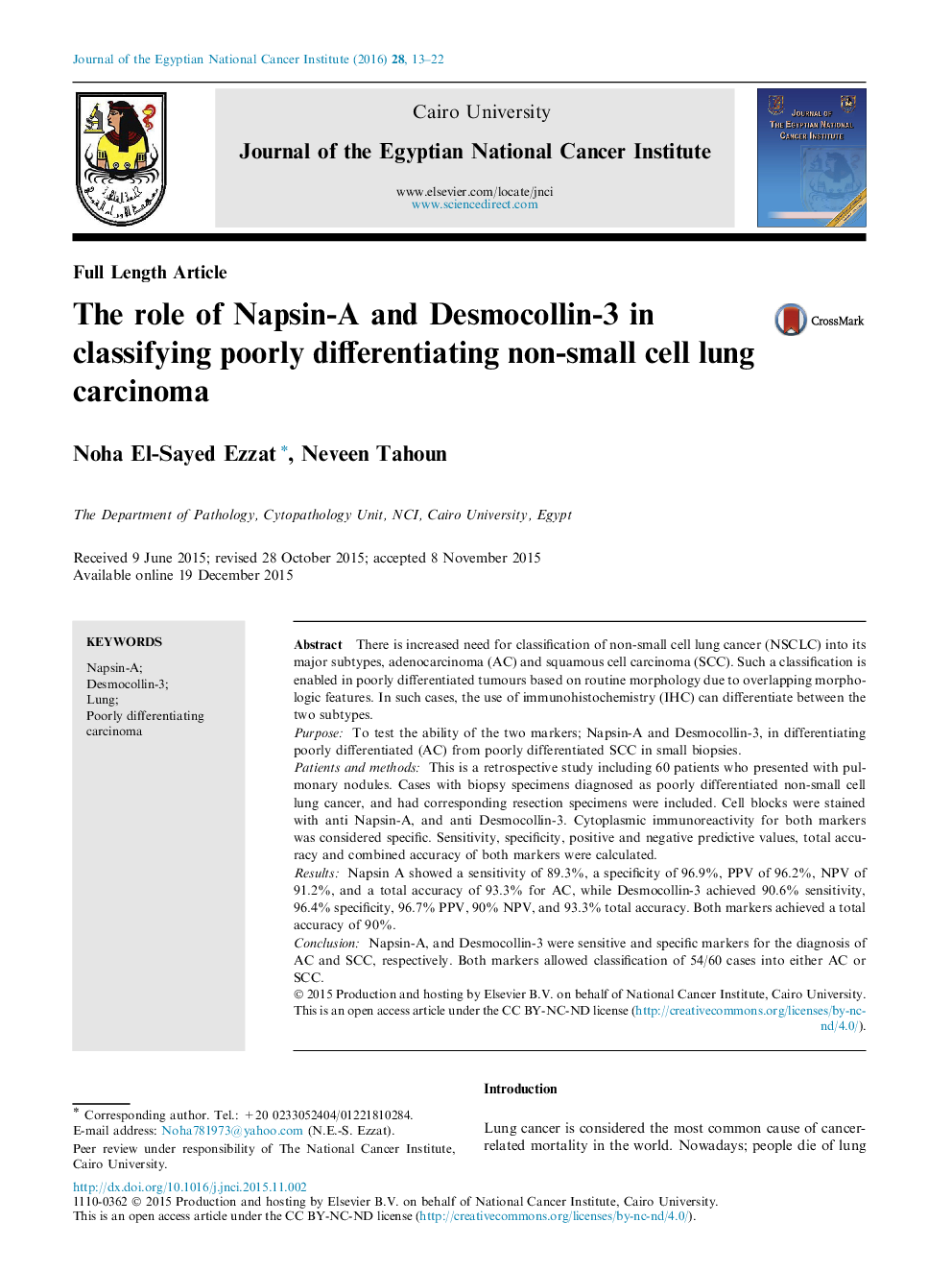| Article ID | Journal | Published Year | Pages | File Type |
|---|---|---|---|---|
| 3988887 | Journal of the Egyptian National Cancer Institute | 2016 | 10 Pages |
There is increased need for classification of non-small cell lung cancer (NSCLC) into its major subtypes, adenocarcinoma (AC) and squamous cell carcinoma (SCC). Such a classification is enabled in poorly differentiated tumours based on routine morphology due to overlapping morphologic features. In such cases, the use of immunohistochemistry (IHC) can differentiate between the two subtypes.PurposeTo test the ability of the two markers; Napsin-A and Desmocollin-3, in differentiating poorly differentiated (AC) from poorly differentiated SCC in small biopsies.Patients and methodsThis is a retrospective study including 60 patients who presented with pulmonary nodules. Cases with biopsy specimens diagnosed as poorly differentiated non-small cell lung cancer, and had corresponding resection specimens were included. Cell blocks were stained with anti Napsin-A, and anti Desmocollin-3. Cytoplasmic immunoreactivity for both markers was considered specific. Sensitivity, specificity, positive and negative predictive values, total accuracy and combined accuracy of both markers were calculated.ResultsNapsin A showed a sensitivity of 89.3%, a specificity of 96.9%, PPV of 96.2%, NPV of 91.2%, and a total accuracy of 93.3% for AC, while Desmocollin-3 achieved 90.6% sensitivity, 96.4% specificity, 96.7% PPV, 90% NPV, and 93.3% total accuracy. Both markers achieved a total accuracy of 90%.ConclusionNapsin-A, and Desmocollin-3 were sensitive and specific markers for the diagnosis of AC and SCC, respectively. Both markers allowed classification of 54/60 cases into either AC or SCC.
